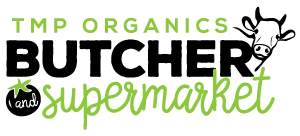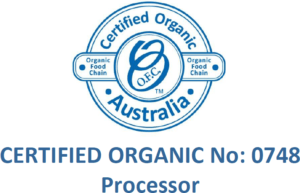Gluten free has become an advertising catchphrase for health foods, but does gluten deserve this evil tag, or are there other underlying issues, such as the over- processing of our foods, which are the problem?
Q. What is gluten?
A. Gluten is a protein and the term comes from the Latin word for ‘glue’ comprises of two protein groups – gliadin and glutenin. The main function of gluten within breads is to help yeast breads stretch when they are raised; it traps the air bubbles from the yeast and keeps them in the dough. The tiny holes in a slice of bread are formed by gluten bubbles which give the lightness to breads.
Q. Should I be gluten free?
A. It should only be avoided if you are unable to digest/tolerate gluten within your digestive system and/or are diagnosed with Celiac disease. Gluten protein is a natural component within some food sources and should not be removed from your diet. Always consult your physician or health professional with any concerns.
Q. Why gluten caused so much difficulty?
A. As stated Sally Fallon, it is one of the most difficult proteins to digest, It may be that our digestive tracts have not had enough evolutionary time to develop the digestive enzymes necessary to assimilate what nutritionist calls one of the most (2001, p. 56). Gluten is inflammatory; it has been shown to damage internal organs and tissues on contact even when specific antibodies against gliadins or other gluten proteins are absent (Braly et al., 2002, p. 30).
Wheat accounts for approximately 20% of all calories ingested (Helms, 2005) and the hybridization efforts have increased the gluten content that gives wheat products the palatable qualities other grains cannot replicate (Bauman, Friedlander 2007). Another factor that may drive what appears to be an addiction to grains is that undigested peptides in gluten-containing grains contain opiate-like chemicals (Bauman, 2005; Braly et al., 2002).
Everything we have read regarding research studies, nutrition books, and books that claim expertise in ancient human nutrition and two authors brought one important factor to light. Sally Fallon and Catherine Czapp, states that existing recipes from traditional cultures indicate that all primitive peoples developed very careful techniques to prepare their grains prior to eating them. At least one of three methods – soaking, sprouting, and fermenting was always used when making grain foods. Soaking and sprouting grains neutralizes the enzyme inhibitors that are naturally present in all seeds, as well as neutralizing other anti-nutrients, such as phytic acid, which make certain nutrients unavailable for assimilation. The slow process of true fermentation, where live cultures of wild yeasts and bacteria are carefully nurtured and often passed down through generations. It not only neutralizes the anti-nutrients in cereal grains, but also makes the proteins easier to digest (Fallon, 2001, p. 453). Studies using naturally soured dough breads, suggests that fermentation appears to at least partially sever the bonds of the toxic peptides in the gluten that are responsible for initiating the intestinal damage seen in celiac disease (DiCagno, cited in Czapp, 2006). Czapp (2006) also cites work done by cereal microbiologist Michael Gaenzle, who has proposed that people who ferment their cereal grains using local organisms create a mutually sustaining, health-enhancing relationship with those microbes(Bauman, Friedlander 2007).
Q. What is protein?
A. As stated by the Centers for Disease Control and Prevention (CDC), “Proteins are part of every cell, tissue, and organ in our bodies. These body proteins are constantly being broken down and replaced. The protein in the foods we eat is digested into amino acids that are later used to replace these proteins in our bodies. Protein is found in the following foods: meats, poultry, fish, legumes (dry beans and peas), tofu, eggs, nuts, seeds, milk products, grains. In addition, some vegetables, and fruits provide small amounts of protein in comparison to the afore-mentioned sources.
Q. What are the types of protein?
A. “Proteins are made up of amino acids. Think of amino acids as the building blocks. There are 20 different amino acids that join together to make all types of protein. Some of these amino acids can’t be made by our bodies, so these are known as essential amino acids. It’s essential that our diet include these.
In the diet, protein sources are labeled according to how many of the essential amino acids they provide:
• A complete protein source is one that provides all of the essential amino acids. You may also hear these sources called high quality proteins. Animal proteins are complete, including red meat, poultry, seafood, eggs, and dairy, complete proteins can also be obtained through certain plants, such as soy, spirulina, hemp seed, amaranth, buckwheat, and quinoa.
• An incomplete protein source is one that is low in one or more of the essential amino acids.
Complementary proteins are two or more incomplete protein sources that together provide adequate amounts of all the essential amino acids.
For example, some seeds and grains contain low amounts of certain essential amino acids; however, these same essential amino acids are found in greater amounts in dry beans. Similarly, dry beans contain lower amounts of other essential amino acids that can be found in larger amounts in rice. Together, these two foods can provide adequate amounts of all the essential amino acids the body needs” (CDC 2011). In the past, it was thought that these complementary proteins needed to be eaten at the same meal for your body to use them together. Now studies show that your body can combine complementary proteins that are eaten within the same day (JADA 2003; pp. 748 – 765).
Whole grains like wheat, rye, and barley, in their natural state and grown organically have a high source of dietary fibre, B vitamins, vitamin E, selenium, zinc, copper, and magnesium. Whole-grain foods also contain phyto-chemicals, such as phenolic compounds, that together with vitamins and minerals play important roles in disease prevention. The exact mechanisms linking whole grains to disease prevention are not known but may include gastrointestinal effects, antioxidant protection, and intake of phytoestrogens which is concentrated on the outer layers of the grain (Slavin, Jacobs, Marguart & Wiemer 2001, pp. 780-785).
As stated above, grains, in their natural form and organically grown, offer most of these nutrients which are concentrated in the outer layers of the wheat grain; but modern processing from grain to market has left the grain a shadow of what it used to be. A significant portion of the vitamins and minerals are lost during the milling process. To obtain more refined flour, further processing needs to be applied, thus the loss of vitamins and minerals is greater. According to Henry A. Schroeder studies on the Nutritional Loss from Refining Wheat are as follow:
• Thiamine (B1) 77%
• Riboflavin (B2) 80%
• Niacin 80.8%
• Pyridoxine (B6) 71.8%
• Pantothenic acid 50%
• Vitamin E 86.3%
• Calcium 60%
• Phosphorous 71%
• Magnesium 84%
• Potassium 77%
• Sodium 78%
• Chromium 40%
• Manganese 86%
• Iron 76%
• Cobalt 89%
• Zinc 78%
• Copper 68%
• Selenium 16%
• Molybdenum 48%
The data shown reflects the losses in percentages and not what remains (Schroeder 1971).
There are approximately 10 – 20 steps in the processing of wheat grain into white flour depending on the end product and the refinement of the flour, they are:
• Storage bins
• Blending
• Separator reciprocating screens
• Aspirator (air currents)
• Disc Separator
• Scourer
• Magnetic Separator
• Wash stoner
• Tempering
• Entoleter
• First Break Rollers
• Sifter
• Purifier
• Reducing Rollers
• Sifters
• Bleaching
• Bulk Storage
• Enriching
• Packaging
• Dispatch
Currently 14 countries employ government legislation for the compulsory enrichment of wheat flour with various micronutrients. The nutrients are added for the purpose of replacing those lost in the flour processing. For the purpose of enriching the flour, the following vitamins and minerals are added during the enrichment process according to the Food and Drugs Administration (FDA), approximately 0.45 kilograms or a pound of enriched flour must have the following quantities of nutrients to qualify: 2.9 milligrams of thiamine, 1.8 milligrams of riboflavin, 24 milligrams of niacin, 0.7 milligrams of folic acid, and 20 milligrams of iron. The first four nutrients are B vitamins. Calcium also may be added at a minimum of 960 milligrams per pound. Only 5 or so vitamins are replaced for the 19 that are lost (FDA 2001).
It is reasonable to wonder why the wheat grains are processed in the first place? The answer is, to extend the shelf life for production and transportation from grain to market. Currently because of its widespread geographic distribution, acceptance, stability, and versatility, wheat flour is the best way for delivering micronutrients to mankind.
There has to be a better way!
This is only the tip of the iceberg for worldwide grain production and processing. There is no long term data on the link between the consumption of processed foods and the impact on human physiology. If such data existed, would it be put forth for public debate? Scientific methodology allows on for single point cause and effects and does not allow for multiple causes. For example the scientific methodology suggests that a single point causes this effect and if you take this one drug, it will cause this effect; single point logical process. This is the logical methodology being taught at universities; I know because I am attending university for current tertiary education attempting dual degrees in communications and nutrition. To further reiterate this point, why does the nutrient in a carrot do so much good for us? Because the lack of carotenoids, beta-carotene, vitamin c, and trace minerals can cause so many other health problems. Several recent studies have identified these carrot polyacetylenes as phytonutrients that can help inhibit the growth of colon cancer cells; multiple variables working in unison. But then again, without this single point logic we would not have discovered that the earth was round.
We can only draw possible cause and effect from data that has been correlated from different sources. One example of such correlated data is the increase in health related problems in comparison to the increased consumption from multinational food chains providing processed foods. The main flaw to correlation of different data is that if the data fits into the scales or graph an erroneous conclusion may be drawn, i.e. the comparison of television watching and degenerative diseases from mid 1950’s to today. It could be suggested that there is a link because of the increase frequencies of both activities, while the potential could exist, the possibility is remote. This form of data comparison is widely used by governments and media to influence public behaviour, but I suspect the conclusion is not that simple. A much more likely culprit is what we have done to this planet by employing man-made toxins which we’ve introduced into the food chain. Another science methodology needs to be adopted margining the benefits of both single point and multiple point variables.
Modern day agricultural practises have taken much of the nutrition out of the foods, they are then processed further reducing what little goodness they have; additives, food colouring E1**, anti caking agent E3** etc; you know the drill!
Synthetic or man -made chemical fertilizers are added because nutrients are not adequately supplied by the soil due to lack or crop rotation and growing the same thing year after year plus the fact that these fertilizers are cheap to make and readily and easily absorbed by the pants. There are 16 known elements that are essential for the plant growth but commercially mainly 3 are used Nitrogen (N), Phosphorus (P), and Potassium (K). Pesticides are sprayed during the growing and storage, as the wheat is put into the elevators for silo storage; it is sprayed with a pesticide or a mould retardant or both. So the moral of this is, buy organic.
If you do think you are gluten or dairy intolerant, before you seek professional advice you might try eating small amounts of the suspected food in its raw form. Depending upon your suspected intolerance, and if it will not cause you too much discomfort, try this small experiment at home. I have witnessed the implementation of this type of testing, and found some amazing results during my employment in specialized cooking. One example is to try obtaining wheat in its raw form and blending it in a coffee grinder, then making bread out of the homemade flour. Another possibility is to buy milk that is not homogenised or pasteurised and try heating the milk at home until just past 70 degrees centigrade or 158 degrees Fahrenheit to kill any potential pathogen, and then try drinking a small amount of it to test for a reaction. It may sound like a lot of work, but the results could demonstrate whether a person is intolerant of a food in its raw form or of the man-made processing of the food. Clearly if it is not the gluten or dairy, it must be something else. Mankind has been eating breads and drinking milk for many thousands of years and only in the last 50 -100 years has there been marked increase in food intolerance. We should all question why that is a fact!
If you are concern with eating gluten free, try non-gluten grains, such as millet, quinoa, brown rice, buckwheat and non-GMO corn. These types of grains do not contain gluten and grains do not initiate the negative effects that come from a reaction to the gluten found in wheat, rye, oats and barley.
In conclusion, food intolerance is a health threat and currently more studies trying to find drugs to fix the problem; but are drugs the answer? Many holistic health professionals have no doubt that modern day food processing conglomerates through their agricultural practices cannot feed us; no matter how much they try and convince us with television and media advertising. The so called present primitive and past cultures did not have these intolerance problems, is it by and largely a modern day problem to be found where ever highly processed bastardised foods are sold. Going organic is not just an esoteric airy fairy ideas, but has substantial amounts of evidence to suggest that it has practical implications of healthier living. On the whole we have lost touch with our foods and need to re-connect for our survival. The answer is basically, to buy organics whenever possible. The higher the demand for organics, the cheaper they will become. Here at, “The Meat-ting Place Cafe” we use a combination of organic buckwheat and polenta flour mix for our range of gluten free dishes for example lasagne, muffins. For our pasta bakes, we use gluten free quinoa/rice flour pasta’s.
Foods should be eaten as nature intended them to be.
References
Bauman, Edward, PhD. Gastrointestinal Health 202.4, Nutrition Consultant Training Program, CD track 10. Penngrove, CA, 2005.
BAUMAN, E. & FRIEDLANDER, J. (2007) Gluten Sensitivity: A Rising Concern [Online]. Bauman College Holistic Nutrition and Culinary arts. Retrieved July 10, 2011, from http://www.baumancollege.net/pdfs/articles/Gluten_Sensitivity.pdf
Braly, James, M.D. and Hoggan, Ron, M.A. Dangerous Grains. New York: Avery, 2002.
CENTER FOR DISEASE CONTROL AND PREVENTION. (2011) Protein [Online]. . Retrieved July 7, 2011, from http://www.cdc.gov/nutrition/everyone/basics/protein.html
Czapp, K. Against the Grain: The Case for Rejecting or Respecting the Staff of Life. Weston A. Price Foundation online, Summer 2006. Retrieved 3/7/07 from http://www. westonaprice.org/moderndiseases/gluten-intolerance.html
Fallon, Sally. Nourishing Traditions, revised second edition. pp. 56, 452-3, 463, 479. Washington, D.C.: New Trends, 2001.
FOOD AND DRUG ADMINISTRATION. (2001) TITLE 21–FOOD AND DRUGS Part 137 CEREAL FLOURS AND RELATED PRODUCTS Subpart B –Requirements for Specific Standardized Cereal Flours and Related Products [Online]. The US Government Printing Office. Retrieved July 7, 2011, from http://frwebgate.access.gpo.gov/cgi-bin/get-cfr.cgi?TITLE=21&PART=137&SECTION=165&YEAR=2001&TYPE=TEXT
Helms, Steve, N.D. Celiac Disease and Gluten-Associated Diseases. Altern Med Rev 2005; 10(3):172-192. Retrieved 3/27/07 from Thorne Research online: http://www.thorne.com/media/Celiac.pdf
Position of the American Dietetic Association and Dieticians of Canada: Vegetarian diets. JADA, 2003; Volume 103(Issue 6), pp.748 – 765.
SCHROEDER, H. (1971) The American Journal of Clinical Nutrition [Online]. Losses of Vitamins and Trace Minerals Resulting from Processing and Preservation of Foods. Retrieved July 7, 2011, from http://www.ajcn.org/content/24/5/562.full.pdf+html
SLAVIN, J., JACOBS, D., MARGUART, L. & WIEMER, K. (2001) The Role of Whole Grains in Disease Prevention [Abstract]. Journal of the American Dietic Association, Volume 101(Issue 7), pp 780-785.


